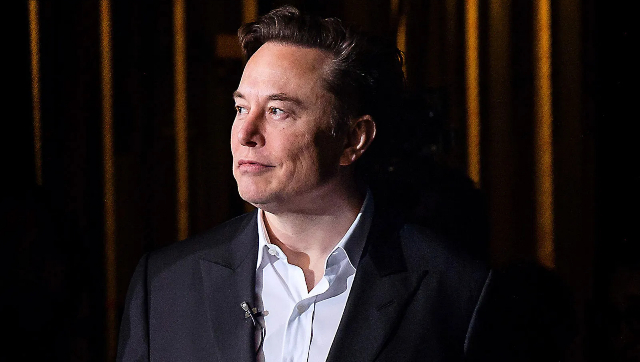OK smartypants, do you care to tell us what the actual discount rate of TSLA was in the middle of 2019, assuming a price of $223.50 June 30, 2019 (split adjusted $14.90) and we assume the current price of $190 is a reasonable valuation.
I am not sure what you are asking. Is there even such a thing as the "actual discount rate"? Does it not depend on many factors?
Most people seem to use risk free return + a term for risk, in 2019 people were using 9% to 12%, recently I've seen 12% to 14% used by different people for discount rates. The term for risk is to some extent subjective.
So in 2019 the TSLA was priced with the expectation that now it would be 223.5 * 1.09^3 to 223.5 * 1.12^3. Obviously the share price now did not meet that expectation, that is perfectly normal because the future contains many unknowns.
Because it sounds like you are assuming the market price must be reasonable now when you judge $1000 in $2030 to be unrealistic. It sounds like you are saying that would imply an unrealistic discount rate.
No, all I am saying is that there is a disconnect between the valuations on TMC and what the market indicates, or that discount rates are assumed to be very high.
I am not saying that any of these are right or wrong. They are all justifyable with reasonable sets of assumptions.
The entire reason to invest in growth for the long-term is the observation that fast-growing companies are under-valued relative to their future earnings potential. Maybe I'm missing your point, but it sure does seem like you're giving the market more credit than it deserves in terms of being able to accurately value high growth companies. You are talking like a value investor that doesn't believe exceptional performance should be expected from exceptional companies.
If markets are efficient then share price would reflect NPV of future earnings, growth companies would be fairly valued and reflect their future earnings potential.
Neither analyst nor TMC estimates for 2030 have changed much in the last year, but the share price changed by a factor of 4. Massive changes in implied discount rates.
For Tesla, there are multiple scenarios: speed of vehicle ramp, percent of total market reached, total market size, competitors, gross margins, operating efficiency, FSD complete, FSD take rate, robotaxi, robotaxi competitors, energy, real world AI, Optimus (when, how successful), new products, geopolitical issues, and many, many more. If you could estimate their probabilities and joint probabilities then you could create a monte-carlo simulation to get a Probability Density Function (PDF) of the company financials in 2030 (and future prospects), then do NPV calulations using a range of discount rates (to reflect the possible future risk free returns). This would give a PDF for the current expected TSLA price.
The only attempt at doing this I have seen is from ARK Invest, they did not do a particularly good job in my opinion, but I applaud the attempt. We get something like the same thing by aggregating the analyst (and others) share price targets, however there are unknown biases in this and most do not seem to even consider FSD, Robotaxi and Optimus, many do not even take energy into account. Even if FSD, Robotaxi and Optimus are considered low probability futures, their enormous upsides mean they could contribute a lot to the expected NPV.
A monte-carlo simulation is a lot of work, and results are probably highly dependent on subjective factors.
A simpler technique is to model TSLA as a 50% growth stock, this is basically company guidance, past growth is more like 60%. Then model the products as overlapping S curves. So vechicles is about 4-5 more years of 50% growth, energy is another 18 months, FSD (no Robotaxi) is another year, Robotaxi is 3 more years, and Optimus is 1-5 years. After these S curves growth will inevitably slow.
So we have:
| Probability | number of years | factor | product |
| very high | 4 - 5 | 5.1 - 7.6 | cars |
| very high | 5.5 - 6.5 | 9.3 - 13.9 | cars + energy |
| high | 6.5 - 7.5 | 13.3 - 21.9 | cars + energy + FSD |
| medium | 9.5 - 10.5 | 47.1 - 70.6 | cars + energy + FSD + Robotaxi |
| low | 10.5 - 15.5 | 70.6 - 536.3 | cars + energy + FSD + Robotaxi + Optimus |
The factor is used to multiply 2022 income ( $14.1B ) to get income at those years. Lower gross margins are somewhat offset by increased operating efficiency. Then divide by the expected number of shares (after further dilution), multiply by the low growth rate P/E multiple, then discount back to today.
The high probability cars+energy+FSD gives an expected share price now in the $350 - $550 range, and a low probability (Optimus) expected price up to $5,000. Using this very rough estimate TSLA is about 2x undervalued and may with low probability be up to 25x undervalued.
Unknown unknowns increase the range further. The current share price is at or just below the minimum expected share price according to this analysis, there is very little downside, but considerable upside. If Tesla continue executing as well as they have been this is a real chance that they will make a sucess or FSD, Robotaxi and Optimus. As time goes by and they become more likely then the share price should rise to reflect this.



)